Study sites in cropland
Study sites in grazing land
Study sites in forests
General description of San Mauro Cilento
| Authors: | Gianni Quaranta, Rosanna Salvia |
| Editors: | Alexandros Kandelapas, Vassilis Koutsoukos, Jane Brandt |
Editor's note 11Feb13: Source D131-3.5
Location and history
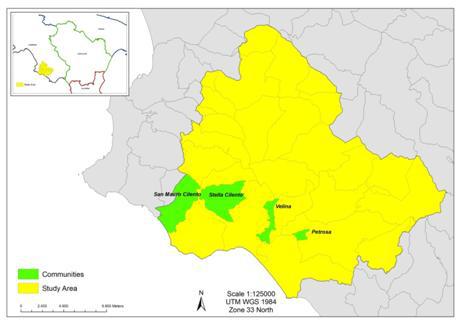 |
San Mauro Cilento covers 15.09 km² at the western part of the Province of Salerno. Average altitude of San Mauro Cilento is around 560m. Despite high rates of emigration in the 1960s, due to unemployment, the area has seen remarkable economic recovery since the 1970s, owed primarily to the operation of the local olive growers’ cooperative “Nuova Cilento”, now Italy’s second largest producer of organic extra-virgin olive oil. While in inland areas farming prevails, tourism and other service industries are bigger employers along the coast. |
Topography, soils and hydrology
San Mauro Cilento consists predominantly of coastal hills (52% of territory), followed by marl-arenaceous and marl-calcareous mountains (42.87%). Around 45% of the territory has an altitude of between 300-600 m and 22% between 150-300 m. Aspects are generally southwest (14% of the area), West (14%) and South (13%). Prevalent slope value is above 50% (41% of the area), followed by slope values of 30-50% (36% of the area).
San Mauro Cilento is prevalently covered with Steep land characterized by “slopes in excess of 30%”, whilst coastal areas have a high presence of slopping land.
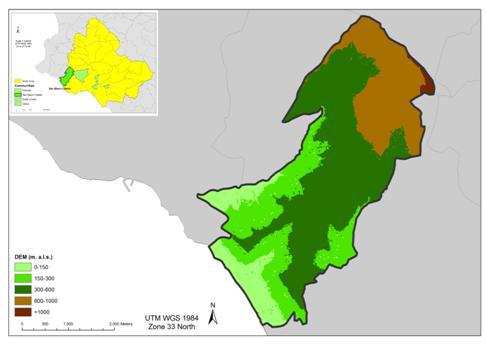 |
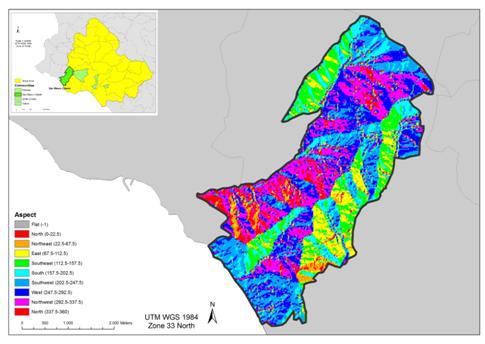 |
There are 25 examples of active landslides in the area, covering 14% of the territory.
Most frequent soil categories are Calcari-Leptic Cambisols and Endoleptic Luvisol which make up around 35% of the territory. Both types have a much higher percentage in San Mauro Cilento than in the study area as a whole. The category CalcaricRegosols makes up around 33% of the whole study area but is barely present in San Mauro Cilento.
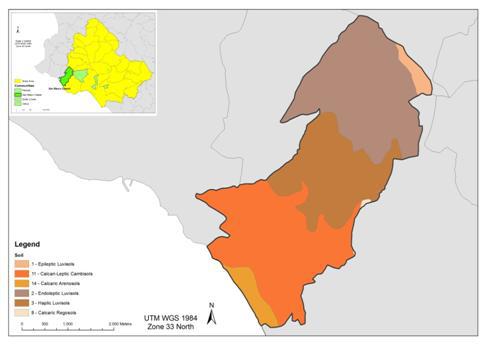 |
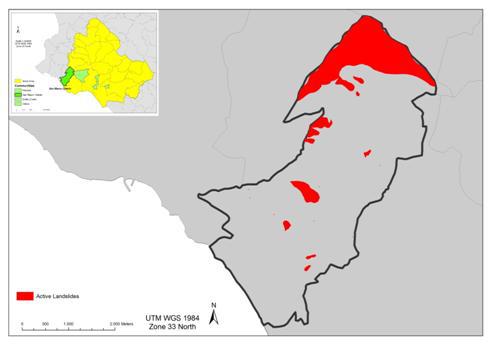 |
With regard to soil texture, soils are generally moderately fine (36.7%), coarse medium (35.8%) or fine textured (23.9%). Soil depth classes are moderately shallow (30-60 cm, 35.8% of the area), moderately deep (60-100 cm, 34.8% of the area) or deep (100-150 cm, 27.5% of the area). The class of rock fragments between 20% and 40% covers 72.5% of the total area. The area is covered by well drained soils (72.5% of the area).
The ridge that runs along the inland mountainous area of the municipality acts as a barrier between San Mauro Cilento and the Alento River and its effluents.
Ecosystems and land use
San Mauro Cilento is included in the National Park of Cilento and Vallo di Diano, while its northwestern part is part of the Mount Stella Site of Community Interest for biodiversity.
Ecosystems are dominated by cultivated land. Around 40% of the territory is covered by olive groves, as opposed to 11.5% in the total study area. There is also a strong presence of Forests (25%) whilst the remainder of the area is made up of principally agricultural land with natural vegetation and grassland.
Population, employment and income
Over the years the area has seen sever declines in population numbers and population density, particularly since the late 1960’s. Average age of residents has increased over time as has the elderly index (quadrupled in the last forty years), reaching 188.06 in 2001. Although population ageing affects the Alento area as a whole, figures show that this problem is particularly acute in San Mauro Cilento. The total dependency index is on the increase attributed to the increase in the elderly dependency rate. However, birth rates in the municipality are relatively high and have steadily increased in recent years.
Employment in agriculture has declined whilst employment in other sectors has increased. The value added per capita for the municipality of San Mauro Cilento for 2009 is higher than the average value for Alento.
Migratory flows are higher in San Mauro Cilento. In fact, net migration increased from 2002-2009 including a wide range of different nationalities.
Employment and un-employment rates in the study community are similar to those of the Alento area. The total number of people in employment dropped significantly between 1971 and 1981, and then stabilized, a phenomenon partly explained by the fact that people of working age have given up on seeking employment. The percentage of un-employed in the total work force was 19% in 2001. During this period there has been a reduction in self-employment workers and an increase in salaried work.
The percentage of the resident population completing school and continuing with further education has increased, as has the literacy rate.
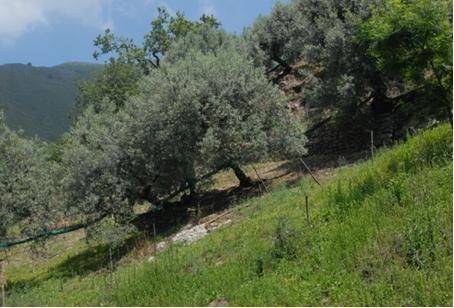 |
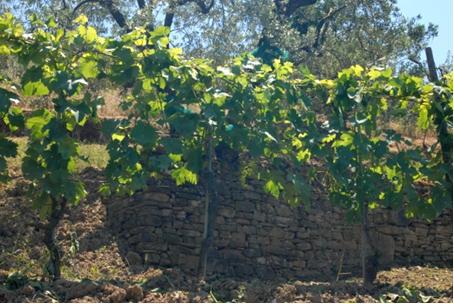 |
Particular LEDD issues in San Mauro Cilento
Given the shared system of crop production and geomorphologic characteristics San Mauro Cilento and the other inland community of Stella Cilento are at risk of much the same threats namely; soil erosion, collapsing terraces, landslides and fires. However, the problem of soil erosion affects this community to a lesser extent due to the presence of works aimed at prevention.
